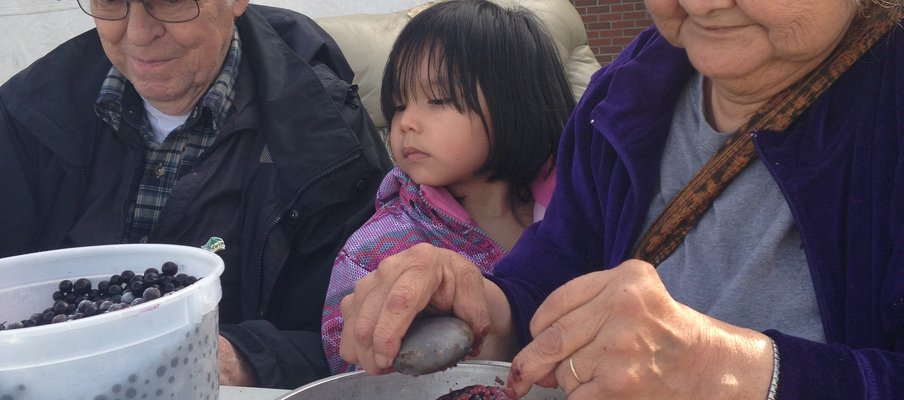Living Heritage Contributes to a Positive Way of Life

Heritage doesn’t need to be defined by only what’s between four walls – it’s all around us. When we think of our heritage, we often think of museum artifacts, buildings, or a piece of artwork. We often don’t think about our Intangible Cultural Heritage
(ICH), or ‘living heritage’, when it encompasses the customs, traditions and practices that make each community unique.
SaskCulture is working towards promoting the importance of the ICH concept across Saskatchewan. Kristin Catherwood, former Community Engagement Animateur and current ICH Development Officer, Heritage Saskatchewan, explains that ICH is where people’s experiences come into play. “These include the stories we tell, the family events we celebrate, our community gatherings, the languages we speak, the songs we sing, knowledge of our natural spaces, our healing traditions, the food we eat and our holidays.”
This heritage also includes new ways of preserving and sharing our stories such as eco-museums. Eco-museums provide a framework for sustainable community development by leaving natural and cultural heritage objects. SaskCulture is part of an ad-hoc Eco-museum Advisory Committee that exists to promote the awareness, understanding and opportunities for the eco-museum model.
SaskCulture’s Municipal Cultural Engagement and Planning Grant was also used to support the Saskatchewan Living Heritage Region Demonstration Project, which was established by the Heritage Canada National Trust, in partnership with the Town of Indian Head. The Living Heritage Region is made up various communities and their surrounding areas such as Carry the Kettle First Nation, Montmartre, Motherwell Homestead, Lebret, Treaty 4 and Fort Qu’Appelle. The Project’s objectives are ecological, cultural, economic and social revitalization.

